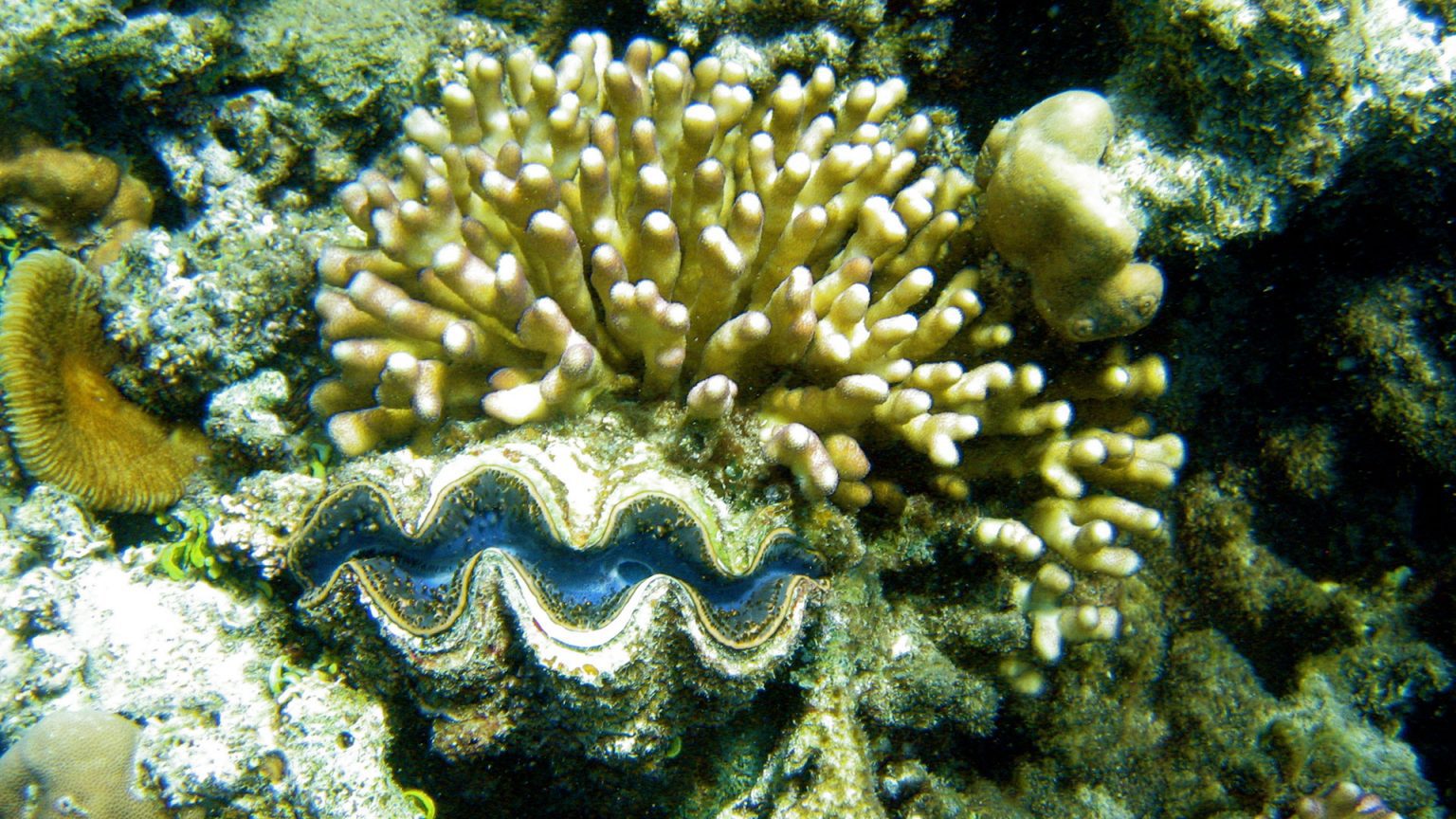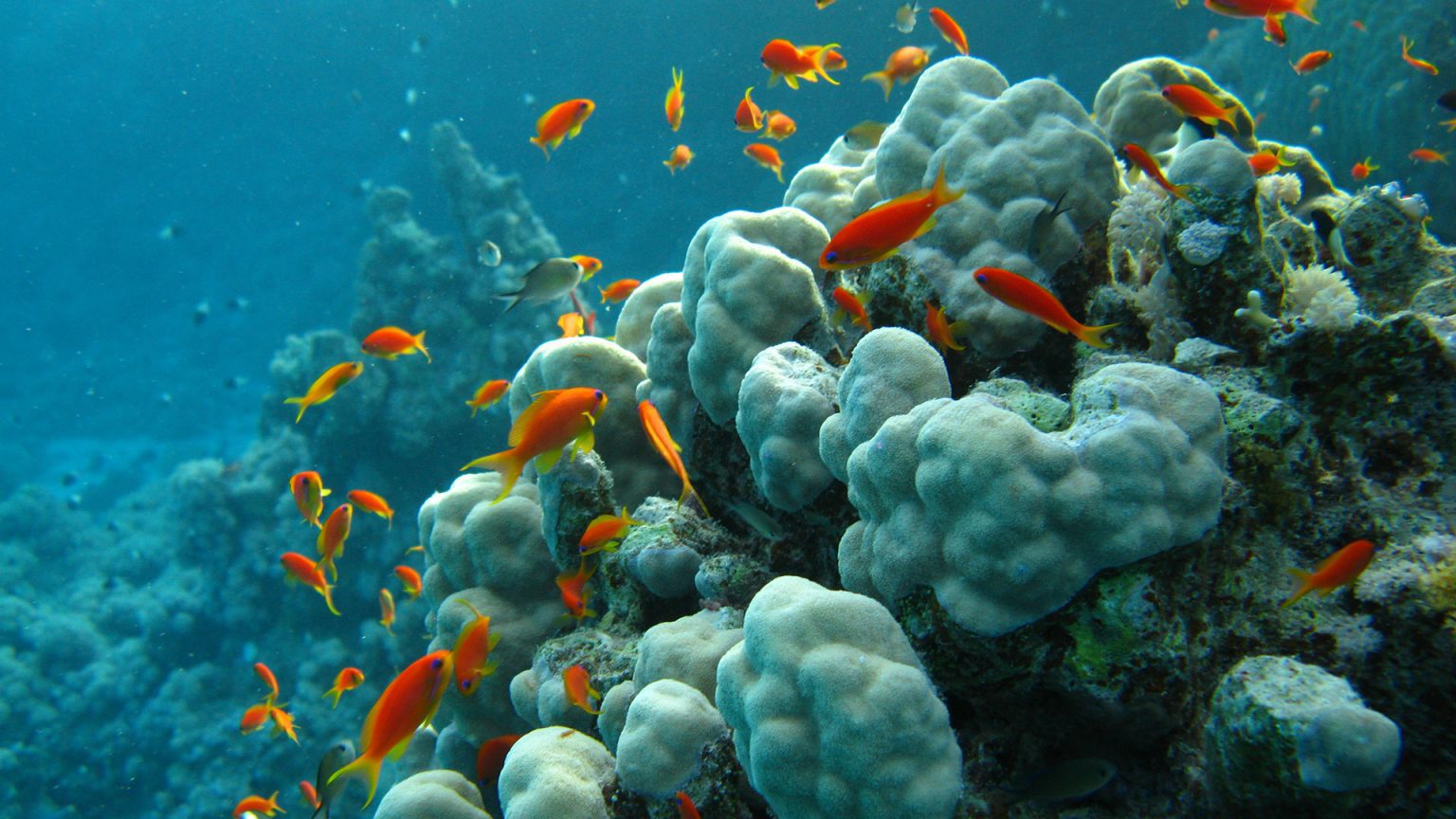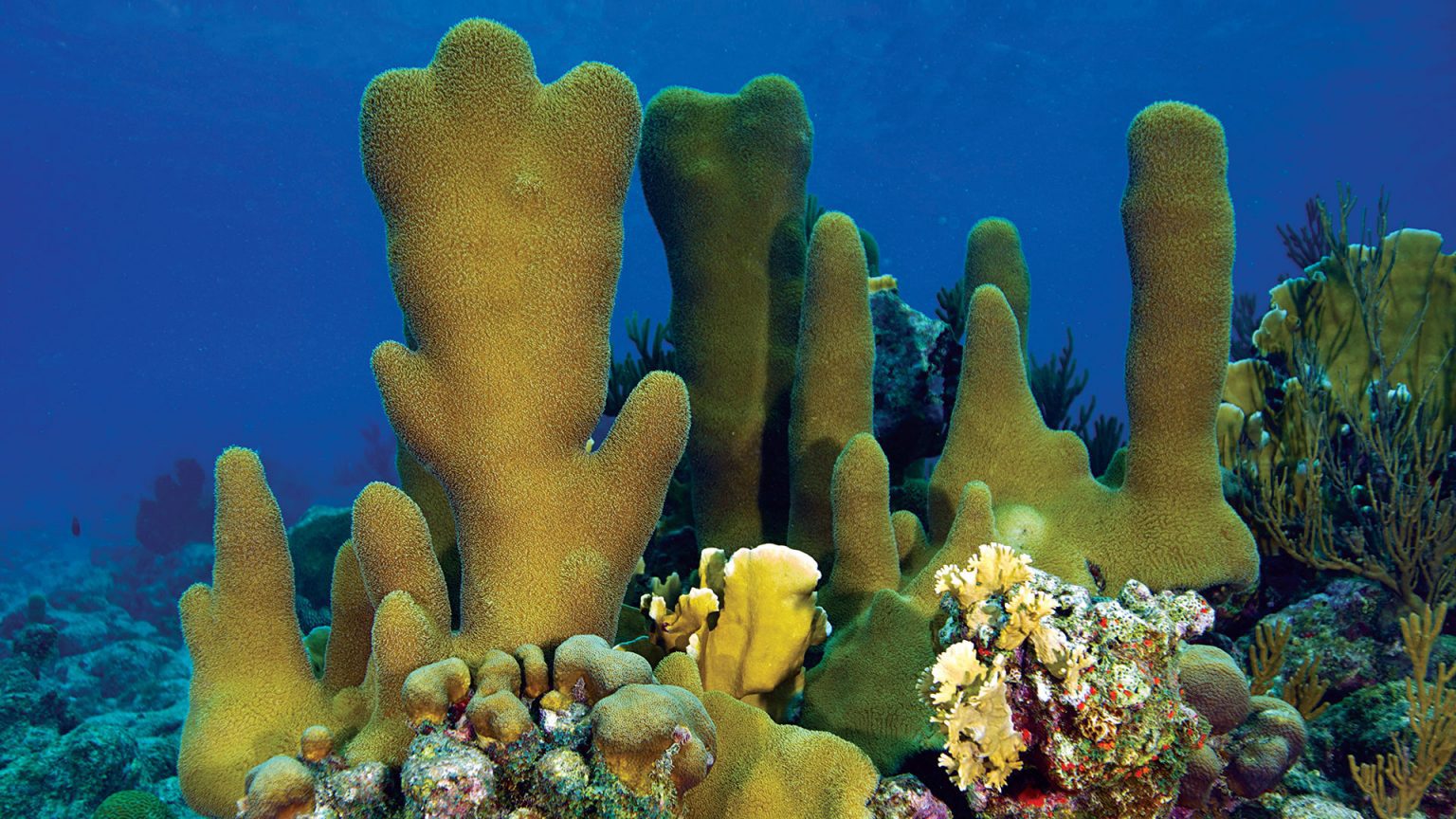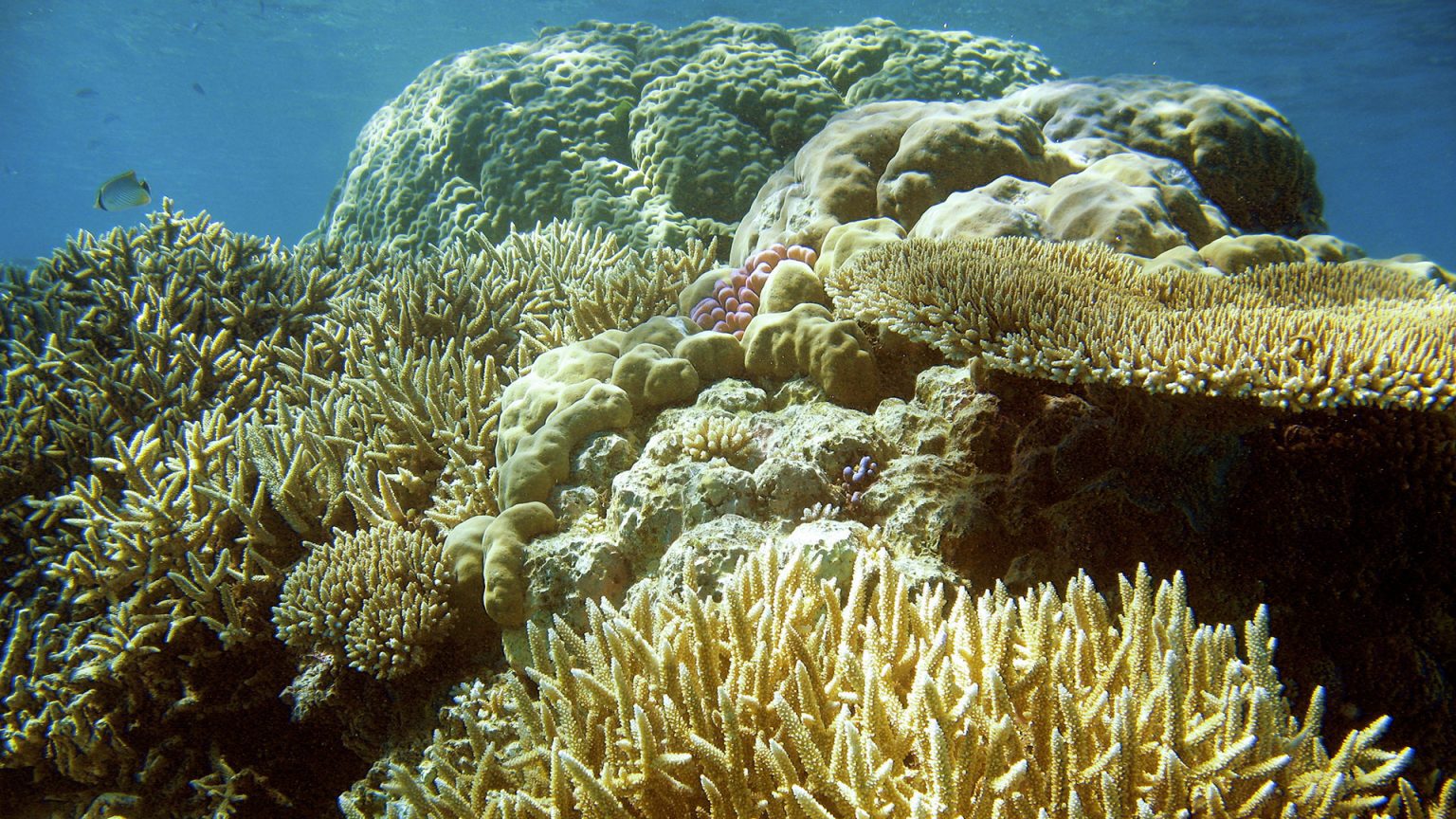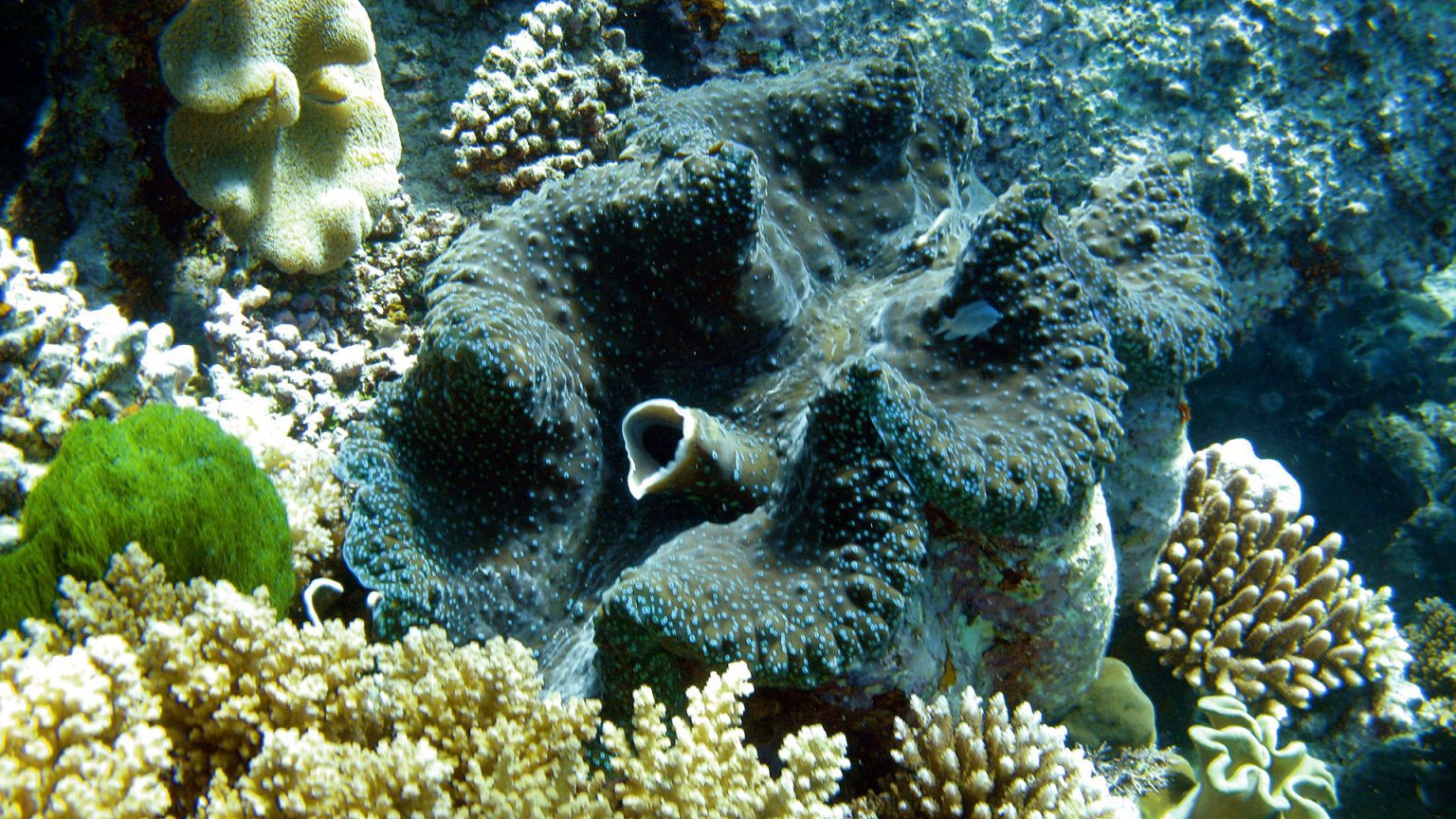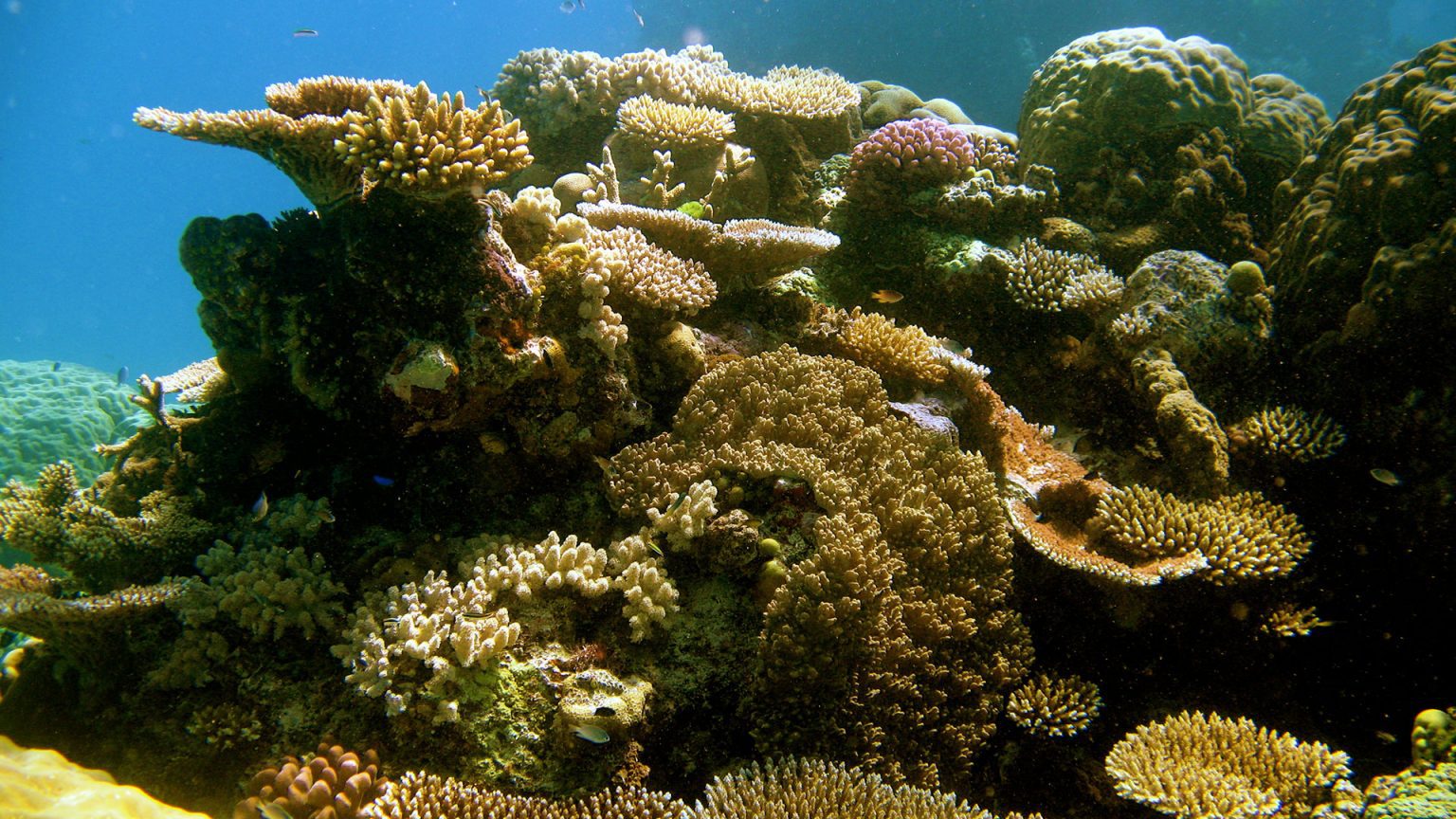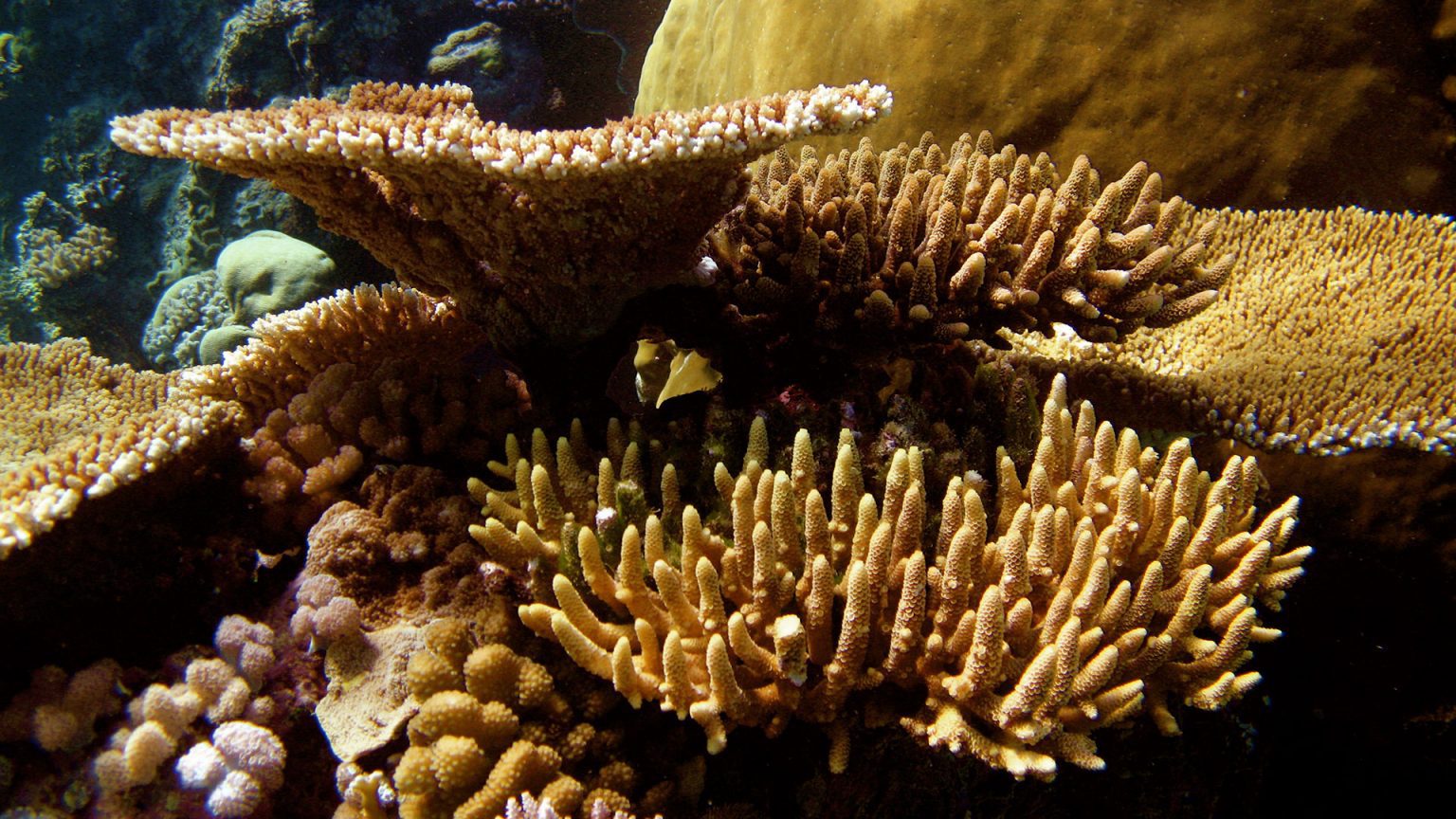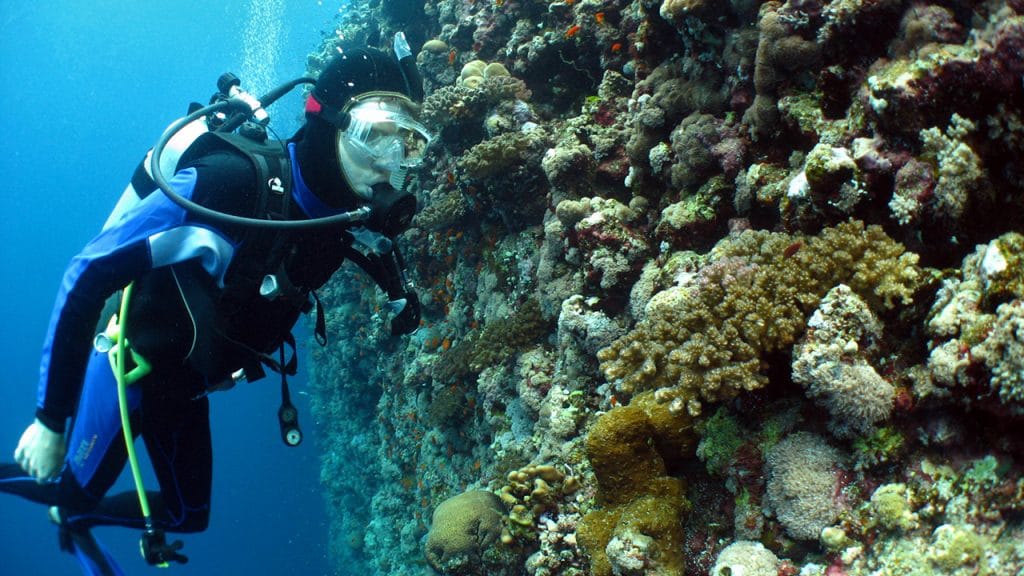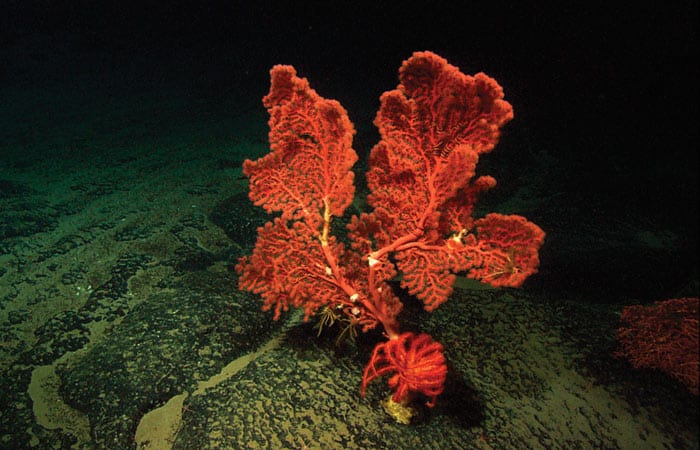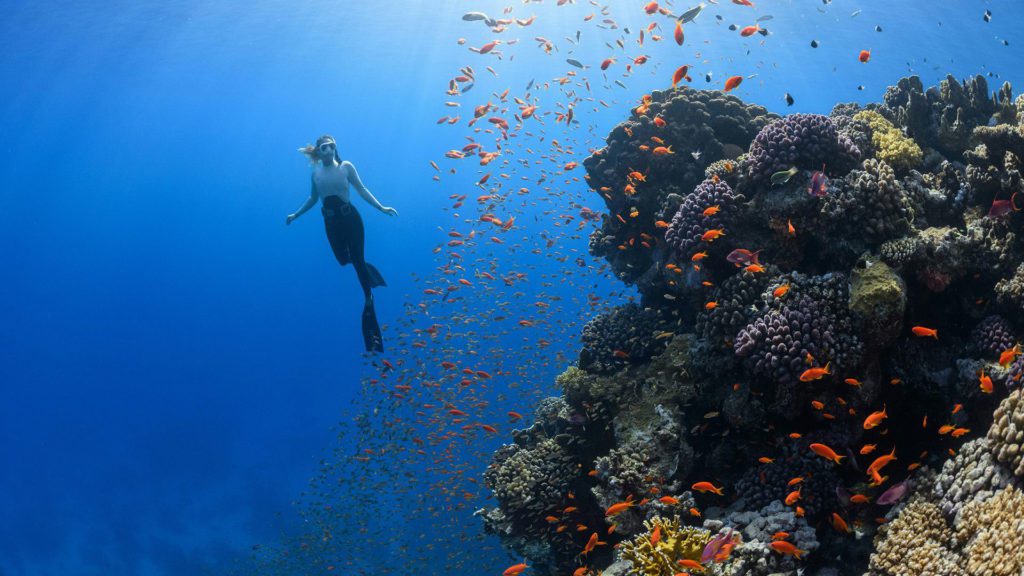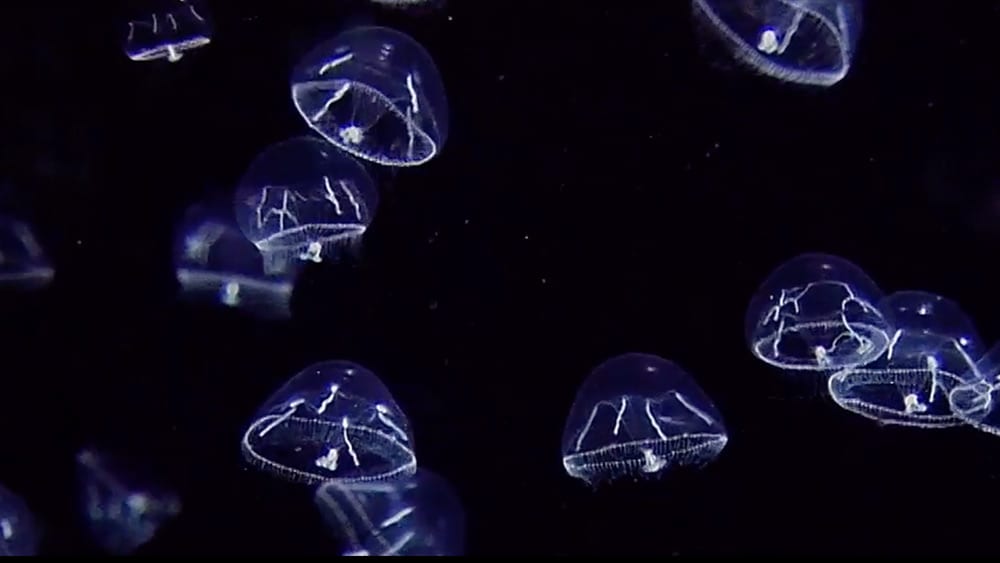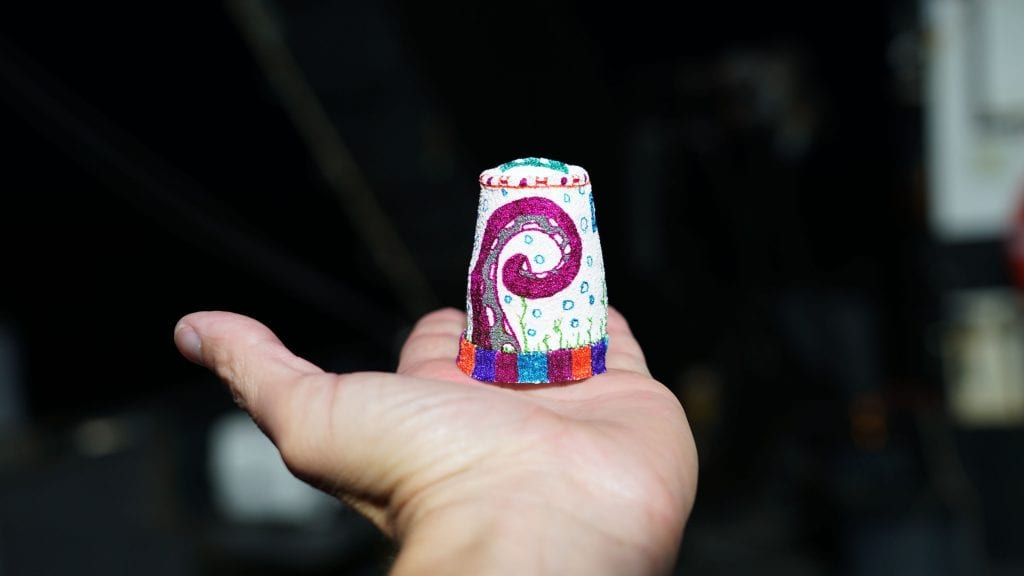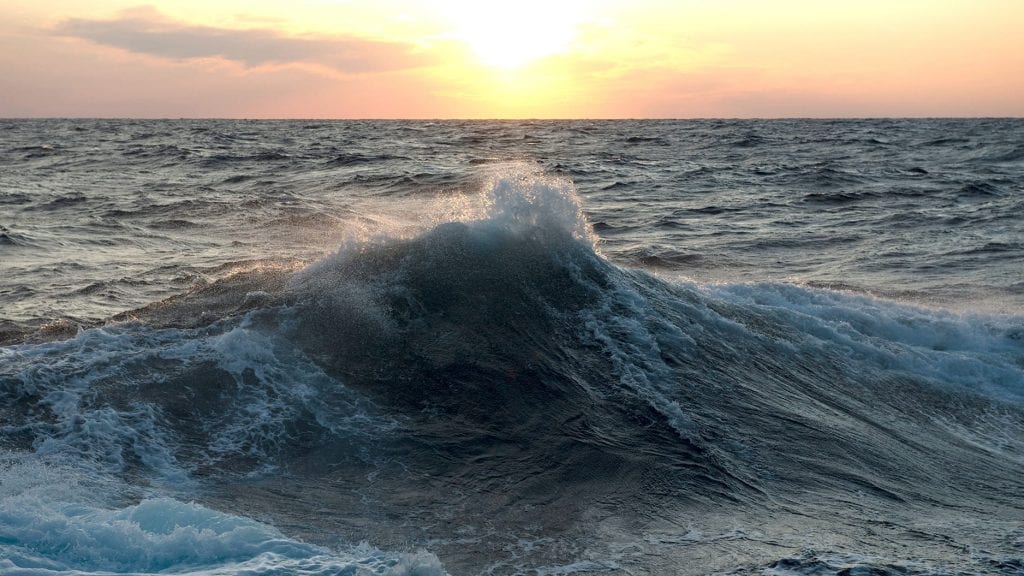The base of a coral reef is coral, but what is coral? If you look at a piece of coral that washed up on shore, it’s solid and tough with rough edges and little pits. It’s not smooth like many rocks, but it’s definitely not alive. The sand on a white beach is made up of tiny pieces of that tough coral (that were pooped out by parrotfish!). Based on this information, coral must be rock. Or is it?
If we look at that same piece of coral when it is still in the water and part of the reef, we find something quite different. That tough, rock-like structure is home to coral polyps. These tiny animals have a short, tube-like body that ends in a mouth ringed by tentacles. The polyps extend those tentacles to snag bits of food from the water, then shove the food into the central mouth. Hundreds, even thousands, of polyps might live on a single piece of that ‘rock.’
But it’s not rock. Corals are animals, and that hard structure is an external skeleton created by the polyps. They anchor themselves in the pits. When danger approaches, they pull their tiny bodies into the skeleton and out of harm’s way.
Corals are animals, but most reef-building corals don’t get energy only from the food they eat. They also rely on photosynthesis—the process of turning carbon dioxide and water into food. This is the same process that plants use to make food. Does that make them plants? No, but plant-like algae are a part of many corals.
Because corals are animals, they can’t photosynthesize. Instead, they have a special, symbiotic relationship with microscopic algae called zooxanthellae (zoo-zan-THEL-ee). This relationship is called a mutualism—it benefits both organisms. The plant-like zooxanthellae gain a protective home in the coral’s tissues. In exchange, the algae share the food they make through photosynthesis with the coral host. Corals with zooxanthellae get up to 90 percent of their food from their symbiotic algae.
Corals can survive without zooxanthellae. Photosynthesis requires sunlight. Deep-sea corals live in the dark, where they can’t photosynthesize. These corals don’t have algae. Corals in shallow waters that do normally have zooxanthellae can survive for a month or two without their symbiotic algae. This can happen when corals bleach due to warm water temperatures. But these shallow-water animals are strongest and healthiest when they have their plant-like companions.
RELATED VIDEOS
LEARN MORE
Deep-sea Corals
When most people think of corals, they think of the Great Barrier Reef off Australia, but deep in the ocean much smaller coral formations lie past the point where light penetrates.
NOAA. Zooxanthellae. https://oceanservice.noaa.gov/education/tutorial_corals/coral02_zooxanthellae.html
WHOI. Deep-sea Corals. https://www.whoi.edu/know-your-ocean/ocean-topics/ocean-life/coral/deep-sea-corals/
DIVE INTO MORE OCEAN FACTS
Why is the ocean vital for our survival?
Without the ocean, life as we know it wouldn’t be possible.
How does bioluminescence work?
Deep in the ocean there’s very little sunlight. But if you could swim down there, it would look a bit like the night sky. Why is this?
Why is pressure different in the ocean?
As anyone who has tried diving to the bottom of a deep pool knows, all that water gets heavy—fast. Extreme pressure is one reason why the ocean floor is still largely unexplored.
What causes ocean waves?
A trip to the ocean means sun, wind, and waves. Surfers ride them. Children play in them. Swimmers dive beneath them. But what causes waves?

